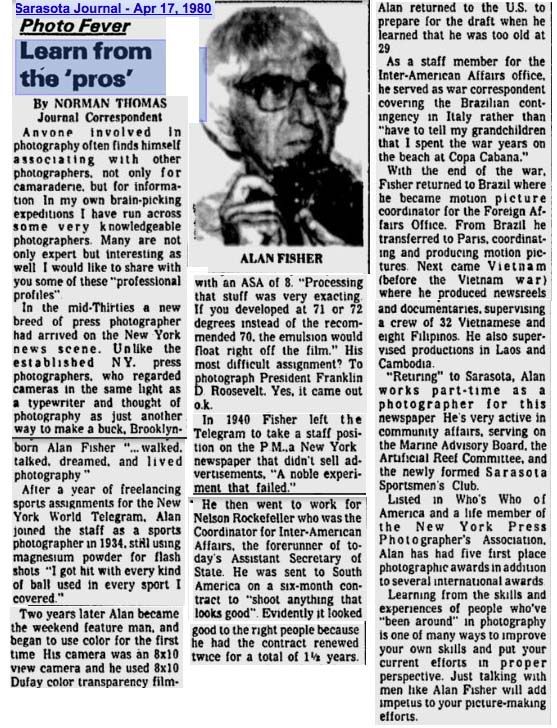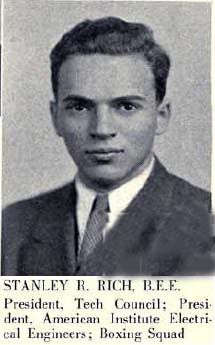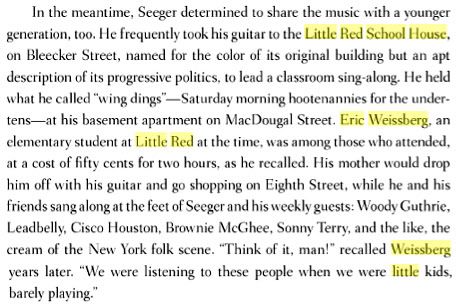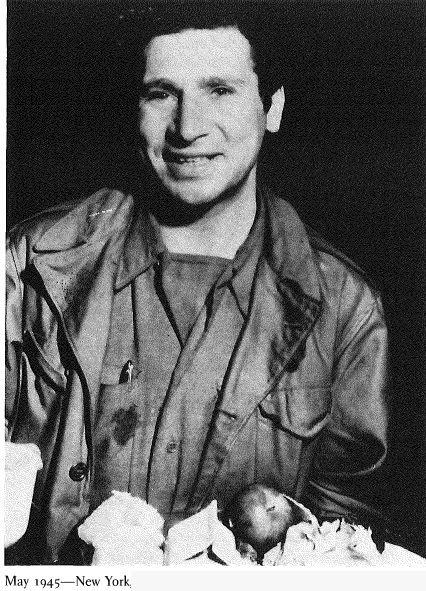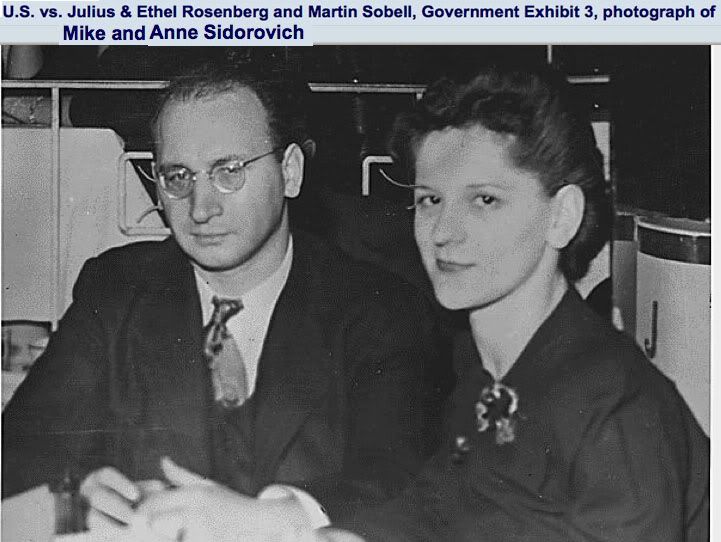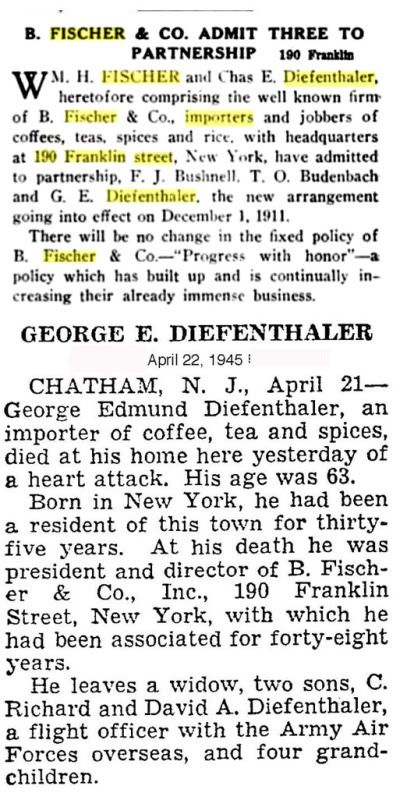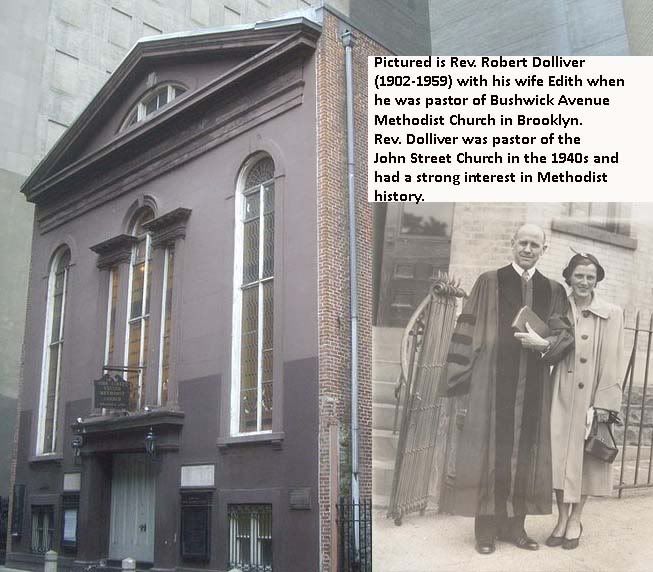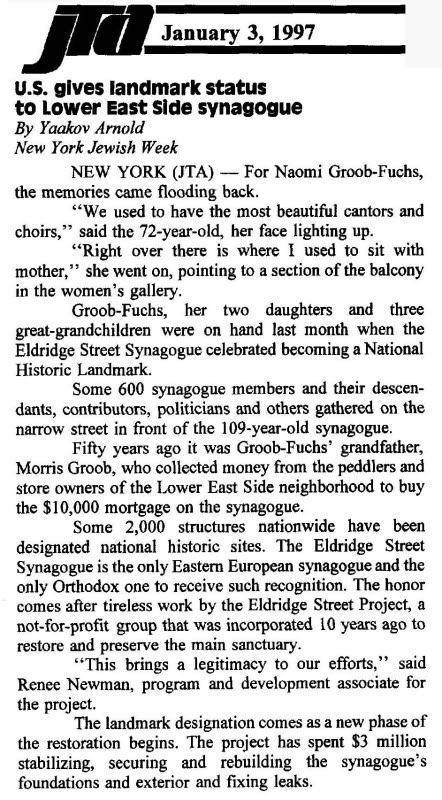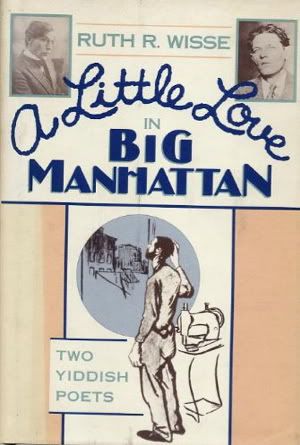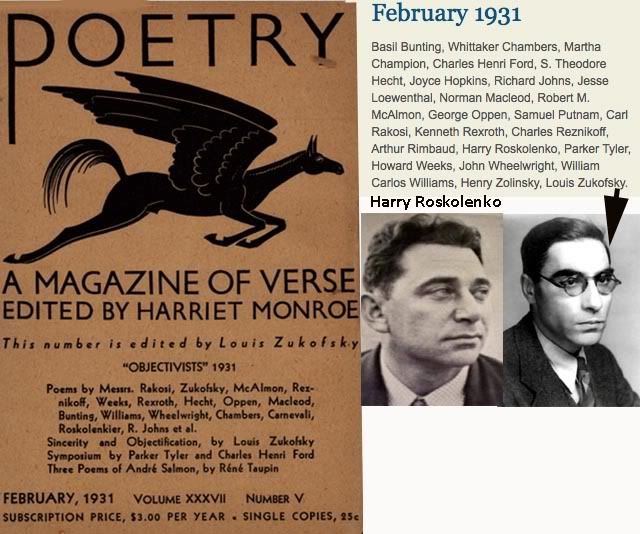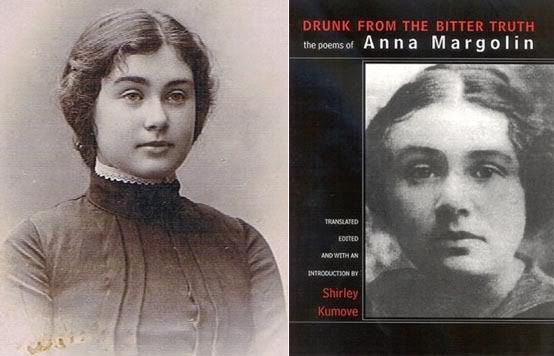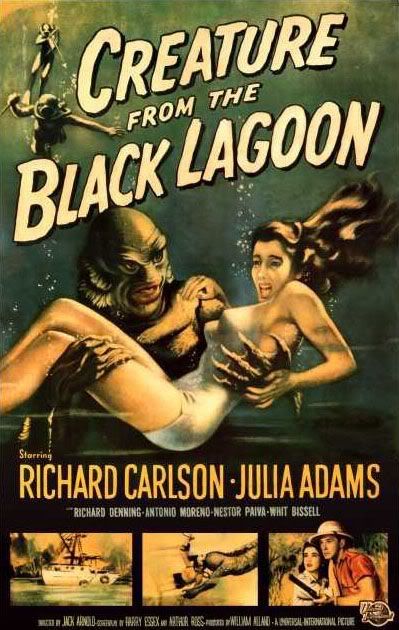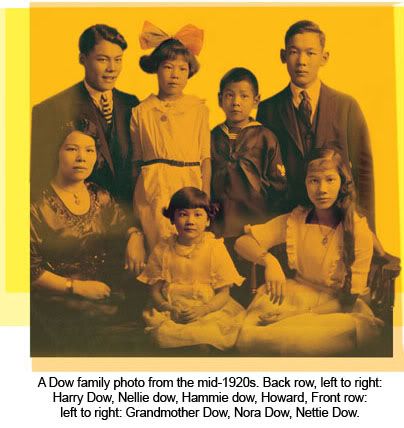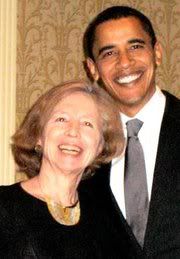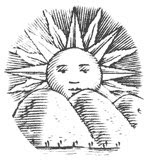Watch Manhattan's Knickerbocker Village still suffers post Sandy on PBS. See more from MetroFocus.
From November, 14, 2012Thursday, November 29, 2012
Who's Almost Who In Knickerbocker Village History: Marvin Miller
Miller died recently. Truly a great man, even if he rooted for the Dodgers and not the Yankees. At the beginning of WW2 his dad was working on Division Street near Chatham Square. He probably knew Bruce and Nancy Bueller's grandfather, Ruben who had a store at number 5 Division
Marvin Julian Miller was born in the Bronx on April 14, 1917, and grew up in Flatbush rooting for the Brooklyn Dodgers. His father, Alexander, was a salesman for a clothing company on the Lower East Side in Manhattan, and as a youngster Marvin walked a picket line in a union organizing drive. His mother, Gertrude Wald Miller, who taught elementary school, was a member of the New York City teachers union.from the john sterling blog 10 things school children should know about the late Marvin Miller 1. In 1966, when he formed the MLB Players' union, the average salary was a stinking $19,000. 2. Over the last 20 years, he was consistently screwed out of being elected to the Hall of Fame by rigged committees of bitter owners and toadie sportswriters. 3. Joe Morgan once said, of Miller's exclusion from the Hall: "They should vote him in and then apologize for making him wait." 4. Before taking over the Players Union, he worked with the Machinists, the UAW and the Steelworkers. 5. In his first bargaining agreement in 1968, he increased the MLB minimum salary from a pitiful $6,000 to $10,000. 6. That was the first minimum salary increase in two decades. 7. He seized on the fact that Charlie Finley had welched on Catfish Hunter's contract, freeing him to sign with the Yankees. 8. He recognized that too many free agents at once would drive down the value of players; thus, he set up a system where only a few would hit free agency each year. 9. At the end, Miller grew fed up with the votes for Cooperstown. He said, "At the age of 91, I can do without farce." 10. He led his union through three strikes and two lockouts. The final record: 5-0.
Monday, October 1, 2012
Who's Almost Who In Knickerbocker Village History: Barry Commoner
Barry passed late last night. Author Michael Egan writes about Commoner's importance on his blog.
An biographical excerpt from book rags
Barry Commoner was born in Brooklyn, New York, on May 28, 1917. His parents were Isidore Commoner, a Russian immigrant tailor, and Goldie Yarmolinsky Commoner. During his childhood in East New York and Flatbush , Commoner demonstrated a keen interest in science. He spent his spare time scouring city parks for specimens he could examine under his microscope...... Doing some detective work on ancestry I discovered his father
had a tailoring business at 36 East Broadway in 1918. He also had a business at 20 East Broadway and 66 New Bowery (now St. James Place).
Labels:
Barry Commoner,
east broadway,
who's almost who
Friday, August 24, 2012
Thursday, August 23, 2012
End Of A 14 Monroe Era
We lost a lovely lady, Phyllis Nathanson, last week. It was especially sad because she was the last of my baby boomer friends' parents that lived at 14 Monroe Street. Our condolences to Bob and Jeff and their families. Phyllis lived long enough to be a great-grandmother as well as schep many naches from the accomplishments of her children and grandchildren. The above pictures Phyllis and her husband Moe back in the mid-late 1950's. The Nathansons and Bellels had gone on a boat ride up the Hudson to Bear Mountain.
Saturday, August 11, 2012
Alan Fisher, Part 2
Alan Fisher
From the library of Congress. Fisher was a photographer for the World Telegram and the Sun in the 1930's.
Another part of an interview done with him for a library of Congress oral history project:It concerns Fisher's time as a photojournalist in Vietnam. For part one on a previous postQ: This was after Dien Bien Phu?
FISHER: Oh, yes.
Q: You were doing it for South Vietnam because the North had already separated. Objective of Mopix in Vietnam FISHER:
Yes. We were doing it for South Vietnam, and we had three objectives, basically: to support President Ngo Dinh Diem, to tell what USOM, the operation mission, was doing in Vietnam, and to support other American policy objectives through news clips which we brought in. So theoretically, I was to check every newsreel with the Minister of Information, but after checking with him a few times, he said, "You know what you're doing. Don't bother me with it." So we put it out under their name. It was released in 37 theaters first run in Vietnam, all over South Vietnam, and very effective. I had two cameramen everywhere President Ngo Dinh Diem went. We had two cameramen with him. We always had a story of him, and that's the way they knew him. Remember this was before television, so they knew him through the newsreels. I think it was a very effective way of doing it.
Q: It didn't keep him from being overthrown, however.
FISHER: No, it didn't. He was a nice guy, you know. Mrs. FISHER: He was not overthrown; he was murdered. FISHER: Yes. Incidentally, an aside. Wes Fischel was the head of the United States Operation Mission at that time. He used to breakfast with Ngo Dinh Diem every morning and they'd work out a program for the day. We saw Wes in Washington when he got back. He'd left the service. He was a contractor. He came to the house for dinner one night, and we were talking about perils of living in the Far East. He said, "You know, I spent something like 18 years in the Far East, and I had stomach troubles all the time I was there. Because of these troubles, my diet consisted of just white rice and tea." He said, "You know, I just went through a series of allergy tests and they discovered I'm highly allergic to white rice." (Laughs) To get back to Saigon, it was a good operation. We had a contract with USOM to produce 48 reels of documentaries for them a year. I was there on TDY at this time. Then at the end of this period, I went back to Washington. I had written a long report to Turner while I was there. When I got back to Washington, Turner came over and came out to the house for breakfast one morning. As we were having breakfast, he said, "How would you like to transfer to Vietnam?" And I got a terrible kick in the shins from Florence under the table. I said, "I would like it. I would like it." Because it was exciting, it was fun. Professionally, it was great.
Q: How long were you there on TDY?
FISHER: Three months. I made those changes when I was there.
Q: Florence was still in Paris.
FISHER: She was still in Paris.
Mrs. FISHER: With our daughter, of course.
FISHER: So I agreed, and we went back, direct transfer to Saigon. I really enjoyed it because it was a job that took every moment of my time. In addition to that, I had supervisory responsibilities for production in Cambodia and Vientiane, plus a laboratory contract operation in the Philippines, where all our laboratory work was done. When Turner proposed that I be transferred to Saigon, I said, "I will take it on one condition, that you get me Bill Ridgeway out of Korea, transfer him to the Philippines, to Manila, to supervise that laboratory operation." Because Bill was a crackerjack. I knew if I had him there, I'd never have any lab problems. He agreed to it, so Bill was transferred to the Philippines. I would go over every month or so and talk with Bill. He'd come over occasionally to Saigon. It was a good operation.
FISHER: Oh, yes.
Q: You were doing it for South Vietnam because the North had already separated. Objective of Mopix in Vietnam FISHER:
Yes. We were doing it for South Vietnam, and we had three objectives, basically: to support President Ngo Dinh Diem, to tell what USOM, the operation mission, was doing in Vietnam, and to support other American policy objectives through news clips which we brought in. So theoretically, I was to check every newsreel with the Minister of Information, but after checking with him a few times, he said, "You know what you're doing. Don't bother me with it." So we put it out under their name. It was released in 37 theaters first run in Vietnam, all over South Vietnam, and very effective. I had two cameramen everywhere President Ngo Dinh Diem went. We had two cameramen with him. We always had a story of him, and that's the way they knew him. Remember this was before television, so they knew him through the newsreels. I think it was a very effective way of doing it.
Q: It didn't keep him from being overthrown, however.
FISHER: No, it didn't. He was a nice guy, you know. Mrs. FISHER: He was not overthrown; he was murdered. FISHER: Yes. Incidentally, an aside. Wes Fischel was the head of the United States Operation Mission at that time. He used to breakfast with Ngo Dinh Diem every morning and they'd work out a program for the day. We saw Wes in Washington when he got back. He'd left the service. He was a contractor. He came to the house for dinner one night, and we were talking about perils of living in the Far East. He said, "You know, I spent something like 18 years in the Far East, and I had stomach troubles all the time I was there. Because of these troubles, my diet consisted of just white rice and tea." He said, "You know, I just went through a series of allergy tests and they discovered I'm highly allergic to white rice." (Laughs) To get back to Saigon, it was a good operation. We had a contract with USOM to produce 48 reels of documentaries for them a year. I was there on TDY at this time. Then at the end of this period, I went back to Washington. I had written a long report to Turner while I was there. When I got back to Washington, Turner came over and came out to the house for breakfast one morning. As we were having breakfast, he said, "How would you like to transfer to Vietnam?" And I got a terrible kick in the shins from Florence under the table. I said, "I would like it. I would like it." Because it was exciting, it was fun. Professionally, it was great.
Q: How long were you there on TDY?
FISHER: Three months. I made those changes when I was there.
Q: Florence was still in Paris.
FISHER: She was still in Paris.
Mrs. FISHER: With our daughter, of course.
FISHER: So I agreed, and we went back, direct transfer to Saigon. I really enjoyed it because it was a job that took every moment of my time. In addition to that, I had supervisory responsibilities for production in Cambodia and Vientiane, plus a laboratory contract operation in the Philippines, where all our laboratory work was done. When Turner proposed that I be transferred to Saigon, I said, "I will take it on one condition, that you get me Bill Ridgeway out of Korea, transfer him to the Philippines, to Manila, to supervise that laboratory operation." Because Bill was a crackerjack. I knew if I had him there, I'd never have any lab problems. He agreed to it, so Bill was transferred to the Philippines. I would go over every month or so and talk with Bill. He'd come over occasionally to Saigon. It was a good operation.
Friday, August 10, 2012
Whose Who In Knickerbocker Village History: Harold and Josephine Hatcher
Hatcher and his wife Josephine lived in the G Building, 10 Monroe Street. In 1940 they were employed by the WPA working on agricultural research.
From the hatcher garden
In 1969 Josephine and Harold Hatcher decided to retire to Spartanburg, South Carolina, from Indianapolis, Indiana, where they had lived for over thirty years. They came south partly because of the warmer weather and the seasonal changes that make gardening a delightful endeavor and also because their daughter Alice and her family lived here. The Hatchers purchased a home with a small lot on Briarwood Road on the west side of town. From their small back yard they could see that the wooded area behind their house was covered with tall pines, mature hardwoods, and even a stream. The land itself had once been home to cotton fields, was badly eroded, and had become a dumping ground for local trash, but even so, the Hatchers could see that it had great potential. Soon after moving, Harold expanded his property by purchasing three acres behind his lot for $2000 and he began to convert the old, worn-out cotton fields into usable land for his gardening projects. The Hatchers then started spending all of their spare time filling in the eroded gullies, amending the soil, building paths and ponds, and planting over 10,000 trees, shrubs, and flowers. As the garden continued to grow through the 1970s, members of the Spartanburg Men’s Garden Club, the Spartanburg Garden Club Council, Spartanburg Community College, and the Unitarian Universalist Church became intrigued with the Hatchers’ vision for their garden and began to volunteer their time and resources to support the garden’s development. ......... The Hatchers’ work continued into the 1980s, and in 1987, when he was nearly 80 years old, Harold decided to give the garden more permanent protection by donating the property to the Spartanburg County Foundation. Ownership was transferred, a board established, and 501(c)(3) non-profit status acquired, thus assuring the garden’s continuity. The garden was officially given the name Hatcher Garden and Woodland Preserve with the Hatchers’ blessings. Although Josephine’s health became fragile, Harold continued to work in the garden every day and to direct its progress as more additions were made: a gardening shed, pavilion area, and a parking lot. Josephine Hatcher succumbed to health problems in 1999 and Harold restored the wildflower area in her honor. Harold died in 2003 at the age of 96. The ashes of both Hatchers were scattered in the garden to which they had dedicated so much of their lives and themselves. The Hatchers’ vision that culminated in a public garden in their back yard was not unique. Indeed, there are many public gardens and arboreta around the world that began as private family estates. However, what sets the Hatcher Garden apart from other private estates turned public gardens is the fact that the Hatchers were not wealthy landowners. They were humble people dedicated to a rich spiritual and intellectual life and they were unconcerned with material gain....
Whose Who In Knickerbocker Village History: Alan Fisher
Fisher lived in the G Building, 10 Monroe Street.
Part of an interview done with him for a library of Congress oral history project:
Biosketch: Alan Fisher
FISHER: I was born in Brooklyn in 1913. I graduated from high school, Brooklyn Technical High School, was going to be a chemical engineer, and changed my mind. I started to work for the New York World Telegram as a freelance photographer, and then after a year of that, was given a job as sports photographer. In 1934 I started with them. Then I became special features and color photographer and general all-around photographer on their staff until 1942. Then I left them because I had a very good job offer to join the staff of the newspaper PM. I was on the staff for two years and did an awful lot of coverage of Army camps. I spent almost one year covering Army camps. Then I got a call from Washington from Alexander Murphy, who had been with the AP and had been our photo assignment editor on PM. Al asked me whether I'd go to South America for a six-month contract to work for Nelson Rockefeller's office. At that time, Nelson was the Coordinator of Inter-American Affairs. It was equivalent to modern-day Assistant Secretary for Latin America, but there was no such title at that time. So I said I didn't know whether I could get a leave of absence, and he said, "Sure, we can arrange it with Ralph Ingersoll," the publisher. They arranged it, and I arranged then to go to South America. The interesting thing was that I was given just general ideas on what was wanted, and then I went to Washington on my way to Miami to pick up the plane to Brazil, which was my starting point. I said, "Any final instructions? Specifically what do you want?" Fisher Goes to South America as Photographer for Rockefeller's IIA Program It was an assignment of a lifetime. Al Murphy said, "Just take anything that looks good to you." And those were my instructions for Latin America. I spent two years instead of two months in Latin America on a contract for Nelson Rockefeller, and I photographed Brazil, basically the war effort, industry, prominent people, politicians, and so forth. I went over to Chile after a year and a half, was sent over to Chile to cover the break in relations with the Axis, and after three months there, I was fortunate in getting there in time to cover the break. Florence came with me as my interpreter. She spoke Spanish, I didn't. Then she went back to Brazil, and Vice President Wallace came down to visit Latin America. I was assigned by Washington to cover him for the combined American press. I spent a month with him, then went back to Chile for a month, and then back to Brazil. By that time, I had been reclassified to be 1A, and I got a call from Washington. I said, "I'll be right back."
Q: 1A meaning in the draft.
FISHER: Yes. I had been 2B, essential war worker. The day I got back to the States, they decided that men over 29 were not wanted anymore, particularly married men, and I was automatically reclassified to 2B again. I was given a choice then of going back to Brazil or going over as a war correspondent with the Brazilian Expeditionary Force.
Q: At this point, let me ask a couple of questions to clarify exactly what you were doing with the Nelson Rockefeller program, the IIA program. Were you doing entirely photographic work in connection with things Brazilian, or were you trying to get out any information about the United States and its relationship with Brazil? Fisher's Role in US War Effort Pictures for Publication in US to Acquaint US With Latin America And Have US Stories Played Back to Latin America
FISHER: My job was strictly a one-way job. I was photographing and writing stories to send back to the United States to acquaint the Americans with Latin America. Because at that time, the war wasn't going too well, and our fallback position was Latin America. We were doing a lot of things in Latin America to help the Latin Americans, such as helping them build a steel plant out of Rio, bringing in equipment for them to manufacture airplane motors, heavy equipment, tractors, and so forth, raising the level of food production, and trying to raise the health standards. We were doing this all throughout Latin America, and one of the things I was to do was to photograph this effort, write stories and send them back. The Agency would then distribute them through the wire services, so they were getting a great play. But this really was a fallback position for us. In the event that we did get driven out of the States, we would fall back to Latin America. [Editor's underscoring. It is not thought that the American public ever knew of this possible fallback consideration.] So there was some strategic importance to what I was doing, but it was all the other way. In other words, I wasn't disseminating any information about the United States in Latin America. I was also covering stories for the two slick magazines that the coordinating office put out in Latin America, EM/GUARDA, which is in Brazil and Portuguese, and EM/GUARDA, which was in Spanish for the rest of Latin America. That was really much like the forerunner of Life magazine, the same format, big slick color, a very, very good-looking publication, and a very popular magazine in Latin America. So that carried stories of the American war efforts and battles and American military activity.
Q: Did you write any of those stories?
FISHER: No. No, my pictures were used for that. They were in-house stories out of Washington, but there many of my pictures used for that. Then when I went back, I went back to Washington, and there was a hiatus. I thought I would like to get into the military, because I had been offered a commission as a captain before I left for Latin America. Those positions were no longer available.
Interviewed by: G. Lewis Schmidt Initial interview date: July 27, 1989Q: I want to start out with having Alan give a brief description of his background before he became affiliated with the Agency or its predecessor agencies and institutions, and then we'll take it from there. In the meantime, as I feel that I want to prompt him on particular subjects, I will intervene with a question. Otherwise, I will let him say pretty much what he wants to talk about. So Alan, please begin with a brief bio sketch of your background, and then take it from there.
Biosketch: Alan Fisher
FISHER: I was born in Brooklyn in 1913. I graduated from high school, Brooklyn Technical High School, was going to be a chemical engineer, and changed my mind. I started to work for the New York World Telegram as a freelance photographer, and then after a year of that, was given a job as sports photographer. In 1934 I started with them. Then I became special features and color photographer and general all-around photographer on their staff until 1942. Then I left them because I had a very good job offer to join the staff of the newspaper PM. I was on the staff for two years and did an awful lot of coverage of Army camps. I spent almost one year covering Army camps. Then I got a call from Washington from Alexander Murphy, who had been with the AP and had been our photo assignment editor on PM. Al asked me whether I'd go to South America for a six-month contract to work for Nelson Rockefeller's office. At that time, Nelson was the Coordinator of Inter-American Affairs. It was equivalent to modern-day Assistant Secretary for Latin America, but there was no such title at that time. So I said I didn't know whether I could get a leave of absence, and he said, "Sure, we can arrange it with Ralph Ingersoll," the publisher. They arranged it, and I arranged then to go to South America. The interesting thing was that I was given just general ideas on what was wanted, and then I went to Washington on my way to Miami to pick up the plane to Brazil, which was my starting point. I said, "Any final instructions? Specifically what do you want?" Fisher Goes to South America as Photographer for Rockefeller's IIA Program It was an assignment of a lifetime. Al Murphy said, "Just take anything that looks good to you." And those were my instructions for Latin America. I spent two years instead of two months in Latin America on a contract for Nelson Rockefeller, and I photographed Brazil, basically the war effort, industry, prominent people, politicians, and so forth. I went over to Chile after a year and a half, was sent over to Chile to cover the break in relations with the Axis, and after three months there, I was fortunate in getting there in time to cover the break. Florence came with me as my interpreter. She spoke Spanish, I didn't. Then she went back to Brazil, and Vice President Wallace came down to visit Latin America. I was assigned by Washington to cover him for the combined American press. I spent a month with him, then went back to Chile for a month, and then back to Brazil. By that time, I had been reclassified to be 1A, and I got a call from Washington. I said, "I'll be right back."
Q: 1A meaning in the draft.
FISHER: Yes. I had been 2B, essential war worker. The day I got back to the States, they decided that men over 29 were not wanted anymore, particularly married men, and I was automatically reclassified to 2B again. I was given a choice then of going back to Brazil or going over as a war correspondent with the Brazilian Expeditionary Force.
Q: At this point, let me ask a couple of questions to clarify exactly what you were doing with the Nelson Rockefeller program, the IIA program. Were you doing entirely photographic work in connection with things Brazilian, or were you trying to get out any information about the United States and its relationship with Brazil? Fisher's Role in US War Effort Pictures for Publication in US to Acquaint US With Latin America And Have US Stories Played Back to Latin America
FISHER: My job was strictly a one-way job. I was photographing and writing stories to send back to the United States to acquaint the Americans with Latin America. Because at that time, the war wasn't going too well, and our fallback position was Latin America. We were doing a lot of things in Latin America to help the Latin Americans, such as helping them build a steel plant out of Rio, bringing in equipment for them to manufacture airplane motors, heavy equipment, tractors, and so forth, raising the level of food production, and trying to raise the health standards. We were doing this all throughout Latin America, and one of the things I was to do was to photograph this effort, write stories and send them back. The Agency would then distribute them through the wire services, so they were getting a great play. But this really was a fallback position for us. In the event that we did get driven out of the States, we would fall back to Latin America. [Editor's underscoring. It is not thought that the American public ever knew of this possible fallback consideration.] So there was some strategic importance to what I was doing, but it was all the other way. In other words, I wasn't disseminating any information about the United States in Latin America. I was also covering stories for the two slick magazines that the coordinating office put out in Latin America, EM/GUARDA, which is in Brazil and Portuguese, and EM/GUARDA, which was in Spanish for the rest of Latin America. That was really much like the forerunner of Life magazine, the same format, big slick color, a very, very good-looking publication, and a very popular magazine in Latin America. So that carried stories of the American war efforts and battles and American military activity.
Q: Did you write any of those stories?
FISHER: No. No, my pictures were used for that. They were in-house stories out of Washington, but there many of my pictures used for that. Then when I went back, I went back to Washington, and there was a hiatus. I thought I would like to get into the military, because I had been offered a commission as a captain before I left for Latin America. Those positions were no longer available.
Whose Who In Knickerbocker Village History: Rabbi Max Felshin
The rabbi lived in the G building, 10 Monroe Street.
Turns out that Judith Coplon was really guilty.
Judith Coplon Socolov (May 17, 1921 – February 26, 2011) was one of the first major figures tried in the United States for spying for the former Soviet Union; problems in her trials in 1949–50 had a profound influence on espionage prosecutions during the McCarthy era. Coplon obtained a job in the Department of Justice shortly after she graduated from Barnard College, cum laude in 1943. She transferred to the Foreign Agents Registration section in 1944, where she had access to counter-intelligence information, and was allegedly recruited as a spy by the NKGB at the end of 1944. She first came to the attention of the FBI as a result of a Venona message in late 1948. Coplon was known in both Soviet intelligence and the Venona files as "SIMA". She was the first person tried as a result of the Venona project—although, for reasons of security, the Venona information was not revealed at her trial. FBI Special Agent Robert Lamphere testified at her trial that suspicion had fallen on Coplon because of information from a reliable "confidential informant". An extensive counter-intelligence operation planted a secret document for her to pass to the Soviets. FBI agents detained Coplon in March, 1949 as she met with Valentin Gubitchev, a KGB official employed by the United Nations, while carrying what she believed were secret U.S. government documents in her purse. Coplon was convicted in two separate trials, one for espionage in 1949, and another for conspiracy along with Gubitchev in 1950; both convictions were later overturned in 1950 and 1951, respectively in appeal. The appellant judge in New York concluded that, while the evidence showed that she was guilty, FBI agents had lied under oath about the bugging. Moreover, he wrote, the failure to get a warrant was not justified. He overturned the verdict, but the indictment was not dismissed. In the appeal of the Washington trial, the verdict was upheld, but, because of the possible bugging, a new trial became possible. For political and evidentiary reasons it never took place. Due to these legal irregularities, she was never retried and the government ultimately dropped the case in 1967.
Labels:
10 Monroe,
Judith Coplon,
Rabbi Max Felshin,
who's who
Wednesday, July 18, 2012
Joe Darion's "Ilya Darling"
A Broadway adaptation of the movie ''Never On Sunday,'' it ran for 320 performances.
Who is this girl who sits so sad A tear a-shining in her eyes Can this be laughing Illya Laughing Illya who wants to cry Illya Darling, Darling Illya Like a song we sing your name You are music, you are laughter You make life a lovely day Laugh with us and sing with us And dance with us, we need you so Illya Darling, Darling Illya Be the joy we used to know Now, Illya's name it means "The Sun" To cry was never Illya's style The sun we know was made to shine And Illya was made to smile Oh, Illya Darling, Darling Illya Like a song we sing your name You are music, you are laughter You make life a lovely day Laugh with us and sing with us And dance with us, we need you so Illya Darling, Darling Illya Be the joy we used to know Laugh with us and sing with us And dance with us, we need you so Illya Darling, Darling Illya You are all the joy we know Illya!In 1968 Darion was nominated for a Tony Award for best lyricist for "Ilya, Darling:" Manos Hatzidakis as the Composer.
Joe Darion's "Shinbone Alley"
Before there was Cats, there was Shinbone Alley. Never saw Shinbone in any version and I never understood the popularity of Cats.
Shinbone Alley (sometimes performed as archy & mehitabel) is a musical with a book by Joe Darion and Mel Brooks, lyrics by Darion, and music by George Kleinsinger. Based on archy and mehitabel, a series of New York Tribune columns by Don Marquis, it focuses on poetic cockroach Archy, alley cat Mehitabel, and her relationships with theatrical cat Tyrone T. Tattersal and tomcat Big Bill, under the watchful eye of The Newspaperman, the voice-over narrator and only human being in the show. The project began in 1954 as a Columbia Records concept album with Marquis' original title, featuring Eddie Bracken, Carol Channing, and David Wayne. That same year a concert version was presented by the Little Orchestra Society at The Town Hall in New York City. With an expanded book, the addition of several lengthy ballet sequences, and a cast of animal characters, the rechristened Shinbone Alley preceded Cats by a couple of decades and was a precursor of the far more successful Andrew Lloyd Webber hit. It was one of the first Broadway shows to feature a fully integrated cast. With neither an out-of-town tryout nor a preview period, the Broadway production opened on April 13, 1957 at The Broadway Theatre, and closed on May 25, 1957 after 49 performances. Following "creative differences" with the writers and producers, original director Norman Lloyd requested that his name be removed from the credits. The production was supervised by Sawyer Falk and choreographed by Joe and Rod Alexander, with production design by Eldon Elder, costumes by Motley, and lighting by Tharon Musser. The cast featured Bracken, reprising his role as archy, Eartha Kitt as mehitabel, Erik Rhodes as Tyrone, and George S. Irving as Big Bill. Supporting players included Cathryn Damon, Jacques d'Amboise, Ross Martin, Lillian Hayman, and Allegra Kent. Relative newcomer Chita Rivera was Kitt's standby. The show's sole Tony Award nomination was for Best Costume Design. In lieu of a cast album recorded in a studio, a tape of a live performance was transferred to acetate and released on the Legend label. In 2005 the musical had its Australian premiere in Melbourne, under the name archy & mehitabel. Produced by Magnormos, it was directed by Aaron Joyner and starred Jane Badler in the role of Mehitabel, and Michael Lindner as Archy.[1][2] The "Musicals Tonight!" series presented a staged concert version in November 2006 in New York City.
Joe Darions "Strange Things Are Happening"
"Strange things are happening" became a national catchphrase evolving from the run of The Red Buttons Show. It remained his signature theme. For half a century, he would hop on one foot, clap hands, and palm his ear whenever the music played, a childlike, trademark bit recalled by fans of his TV program. The lyrics were written by Joe Darion.
Ho Hofor more on the Joe Darion KV connection
Ho Ho
Hee Hee
Hee Hee
Hah Hah
Hah Hah
Strange Things Are Happening
Strange Things Are Happening
I once had a teacher who flunked me in history
She asked, "Who shot Lincoln?"
I answered, "Don't blame me."
Ho Ho
Ho Ho
Hee Hee
Hee Hee
Hah Hah
Hah Hah
Strange Things Are Happening
Strange Things Are Happening
I gave golden earrings to someone who turned sweet sixteen
Now, I'm so embarrassed her ears are turning green
Ho Ho
Ho Ho
Hee Hee
Hee Hee
Hah Hah
Hah Hah
Strange Things Are Happening
Strange Things
I went to the movies and witnessed the strangest scene.
One kid brought a tv and tried to dial the screen
Ho Ho
Ho Ho
Hey Hey
Hey Hey
Hee Hee
Hee Hee
Strange Things
Strange Things
"Since girls wear those blue jeans, my troubles just never cease
What looks like my nephew, turns out to be my niece."
Ho Ho
Ho Ho
Hee Hee
Hee Hee
Hah Hah
Hah Hah
Strange Things Are Happening
Strange Things
Joe Darion's "Ricochet Romance"
for more on the Joe Darion KV connection
for the more popular Teresa Brewer version
They warned me when you kissed me your love would ricochet Your lips would find another and your heart would go astray I thought that I could hold you with all my many charms But then one day you ricocheted to someone else's arms [Chorus:] And baby I don't want a ricochet romance, I don't want a ricochet love If you're careless with your kisses, find another turtle dove I can't live on ricochet romance, no, no not me If you're gonna ricochet, baby, I'm gonna set you free I knew the day I met you, you had a roving eye I thought that I could hold you, what a fool I was to try You promised you'd be faithful and you would never stray Then like a rifle bullet, you began to ricochetAmazing that someone who went to CCNY in the thirties during a time of political upheaval and who was suspected of being a fellow traveler could write such lame stuff. Amazing too that is was so popular. Yet, that was the landscape of much of the 1950's
Joe Darion's "Change Partners"
for more on the Joe Darion KV connection Music by Larry Coleman We were waltzin' together to a dreamy melody
When they called out "change partners"
And you waltzed away from me
Now my arms feel so empty as I gaze around the floor
And I'll keep on changing partners
Till I hold you once more
Though we danced for one moment and too soon we had to part
In that wonderful moment something happened to my heart
So I'll keep changing partners till you're in my arms and then
Oh, my darlin' I will never change partners again
Though we danced for one moment and too soon we had to part
In that wonderful moment something happened to my heart
So I'll keep changing partners till you're in my arms and then
Oh, my darlin' I will never change partners again
Monday, July 16, 2012
Joe Darion's Impossible Dream
To dream ... the impossible dream ...
To fight ... the unbeatable foe ...
To bear ... with unbearable sorrow ...
To run ... where the brave dare not go ...
To right ... the unrightable wrong ...
To love ... pure and chaste from afar ...
To try ... when your arms are too weary ...
To reach ... the unreachable star ...
This is my quest, to follow that star ...
No matter how hopeless, no matter how far ...
To fight for the right, without question or pause ...
To be willing to march into Hell, for a Heavenly cause ...
And I know if I'll only be true, to this glorious quest,
That my heart will lie will lie peaceful and calm,
when I'm laid to my rest ...
And the world will be better for this:
That one man, scorned and covered with scars,
Still strove, with his last ounce of courage,
To reach ... the unreachable star . On 9/11/2011 Congressman Dennis Kucinich honored Joe Darion
Mr. Speaker, I rise today to honor the memory of a man who inspired the American people with beautiful song, Mr. Joe Darion, lyricist of ``Man of La Mancha.'' Born in New York City in 1911, Mr. Darion worked throughout his life in every genre of music from popular songs to opera. Mr. Darion attended City College before serving his nation in World War II. In the early 1950's he had three Top-10 hits; the Patti Page ballad ``Changing Partners'', the Teresa Brewer novelty ``Ricochet'', and Red Buttons' comedy hit ``The Ho Ho Song''. Mr. Joe Darion is most known for his beautiful lyrics of ``The Impossible Dream,'' which quickly became one of the most beloved pop anthems of our time. ``Man of La Mancha'' opened in New York in 1956 and ran for an incredible 2,328 performances. In recognition of his heart-warming lyrics, Mr. Darion was rewarded a Tony Award for best score. ``The Impossible Dream'' has affected thousands of people, young and old. His lyrics have inspired and touched countless Americans. His words dive deep into the human soul and character. His words, Mr. Speaker, please join me in honoring the memory of a man who touched millions of Americans with his inspiring lyrics and, enabled countless people everywhere to ``Dream the Impossible Dream'', Mr. Joe Darion.
Whose Who In Knickerbocker Village History: Joe Darion
He and his wife Helen lived at 10 Monroe Street, apt GD6, from approximately 1940-1949.
Born in New York City in 1917 his real name was Joseph Schmul. Darion studied journalism at City College of New York and served in the Navy during World War II. After the war, he began writing lyrics. He had three Top 10 hits in the 1950s: "Changing Partners," the Patti Page ballad; "Ricochet," recorded by Teresa Brewer; and "The Ho Ho Song," a comedy number from Red Buttons. He also wrote children's songs such as "The Growing-Up Tree", "The Midnight Train", "The Lollipop Tree", "The Goonie Bird Song" and "Little Red Train to the Zoo".
Darion's first Broadway show was "Shinbone Alley," a jazz opera. He also wrote "Illya Darling," an adaptation of the movie "Never on Sunday." His biggest hit was his writing for Man of La Mancha. He wrote the lyrics to the "Impossible Dream!"Joining ASCAP in 1951, he wrote for radio, TV, films, theatre and concerts. His chief musical collaborators include George Kleinsinger, Ezra Laderman, Guy Wood, John Benson Brooks, Herman Krasnow, and Mitchell Leigh. He died in 2001.
Stanley Rich: FBI Files
Rich Rosenberg
Rich, from this sampling, seems to have come out innocent of any espionage charges.
Note, however, all the informants that are pressed into service.
Labels:
10 Monroe,
Helen Darion,
rosenbergs,
Stanley Rich
Whose Who In Knickerbocker Village History: Stanley Rich
Above, as seen in his graduation from CCNY in 1938.
Beginning in 1940 Stanley lived at 12 Monroe Street, apt HE5 and later moved to the 40 Monroe court. In 1943 his family moved to Cambridge, Mass. He knew Julius Rosenberg at CCNY and was suspected of being part of a group of engineers that Julius and Morton Sobell were attempting to recruit to gather classified information. In Rich's case it would be his expertise in radar.
From his nytimes obituary:
Stanley Rich, Entrepreneur, 76; Invented Submarine Sonar Device By WOLFGANG SAXON Published: November 23, 1993 Stanley Robert Rich, an entrepreneur and inventor who devised a scanning sonar for submarines in World War II, died on Sunday at Youville Hospital in Cambridge, Mass. He was 76 and lived in Grantham, N.H., and Wellesley Hills, Mass. The cause was cancer, his family said. Mr. Rich retired last month as chairman and technical director of Plasmachines Inc. in Natick, Mass., the last of several businesses he started over the years. Plasmachines is an environmental technology company that makes and sells air-pollution control equipment for combustion engines and industrial use. Mr. Rich was granted more than 60 United States patents and about 500 foreign ones since he began his career with the Navy Department of Civil Service and the Harvard University Underwater Sound Laboratory. It was at Harvard that he developed a scanning sonar for which the Navy got the patent and Mr. Rich was awarded two official commendations. A native of Manhattan, he graduated from the City College School of Technology, where he was president of the student body in 1938. After World War II, he worked for the Raytheon Corporation, heading several research departments and developing an ultrasonic machine tool and a motor-speed control system. Over four decades, beginning in 1950, Mr. Rich formed seven corporations to produce and market his inventions, which include high-intensity ultrasonic cleaning devices for industry, acoustic pollution controls and coal-cleaning devices. The companies he headed as president and as technical director include Rich-Roth Laboratories, Ultra-Viscoson Corporation and Teknika Inc. He published more than 50 technical papers, frequently lectured at business meetings and taught entrepreneurship as a Gordon Fellow at Babson College in Babson Park, Mass. He was co-founder of the M.I.T. Enterprise Forum and co-author with David Gumpert of "Business Plans That Win: Lessons From the MIT Enterprise Forum" (HarperCollins, 1987). The book is a business school text. Mr. Rich is survived by his wife, Shirley Cohen Rich; three daughters, the flutist Eugenia Zuckerman of Manhattan, Laurie Rich Alban of Rhinebeck, N.Y., and Dr. Julie Ingelfingfer of Cambridge, Mass., and seven grandchildren.
KVer Eric Weissberg and Pete Seeger
The above from Ronald Radosh's book, "Commies: A Journey Through The Old Left, The New Left and the Leftover Left." Radosh went to school with Eric at the Little Red School House. A previous post about Eric Weissberg
Pete Seeger: Woody Guthrie's 100th Anniversary and the lost song about the Rosenbergs
Pete Seeger, long-time Rosenberg Fund for Children Advisory Board member, performs this "lost" Woody Guthrie song about the Rosenbergs, at the RFC's 10th anniversary celebration in 2001
Celebrating Woody's 100th anniversary on American Routes
10 Monroe Street: 6th Floor and the FBI
Goff 6th Floor
During Julius Rosenberg's incarceration his cellmate Jerome Tartakow was utilized to gather information from Julius. Tartakow passed on a story that prior to her arrest Ethel took $7000 and a Leica camera from the Rosenberg KV apartment and placed it for safe keeping with a sympathizing neighbor. Subsequently there was systematic hunt for that unnamed neighbor and evidence the FBI thought would be further incriminating. Nothing was ever found and some believe Tartakow's story may have been invented. Sophie Goff, Irving's ex-wife was suspected. She was then living on the 6th floor. The above is a record of all of the investigation of people who lived on the 6th floor in 1952.
During Julius Rosenberg's incarceration his cellmate Jerome Tartakow was utilized to gather information from Julius. Tartakow passed on a story that prior to her arrest Ethel took $7000 and a Leica camera from the Rosenberg KV apartment and placed it for safe keeping with a sympathizing neighbor. Subsequently there was systematic hunt for that unnamed neighbor and evidence the FBI thought would be further incriminating. Nothing was ever found and some believe Tartakow's story may have been invented. Sophie Goff, Irving's ex-wife was suspected. She was then living on the 6th floor. The above is a record of all of the investigation of people who lived on the 6th floor in 1952.
Labels:
10 Monroe,
Irving Goff,
rosenbergs,
Sophie Goff
Sunday, July 15, 2012
Whose Who In Knickerbocker Village History: Irving Goff
an excerpt from his wikipedia entry
Irving Goff (1900 - 17 May 1989) was a member of the Communist Party USA and the Abraham Lincoln Battalion, a unit that volunteered to fight during the Spanish Civil War for the Popular Front. During World War II, he was a member of the American Office of Strategic Services, and was instrumental in setting up guerrilla units working behind enemy lines in North Africa and Italy.[1] His exploits as a guerrilla in Spain are considered to be the inspiration for Ernest Hemingway's novel For Whom the Bell Tolls. Irving Goff's parents, of Jewish origin, emigrated from Odessa, Russia to New York in 1900. He grew up in the streets of Brooklyn and Long Island. He was a premier body builder (famous as the "Adonis" of Coney Island's Muscle Beach) and worked as an adagio dancer and professional acrobat before becoming an organiser for the Communist party in New York. Goff arrived in Spain on 4 April 1937, where he joined the International Brigades, working as a driver. In December 1937, he volunteered for dangerous guerrilla operations which frequently required him to work behind enemy lines for up to weeks at a time. ........ One of their objectives was the destruction of the main supply bridge spanning the Albarracín River. The operation may have been the inspiration for Ernest Hemingway's novel For Whom the Bell Tolls. When the book was published in 1940, Goff was critical of the novelist's ignorance of guerrilla operations and the way in which war was treated from "a romantic adventuristic point of view rather than [as] the grim, practical war that it was". In a later interview he said: "I never saw Ingrid Bergman in all the time I was in the war. If I did, I might still be there [Laughs.] The way Gary Cooper blew that bridge - like blowing a seam in a coal mine. I've blown bridges. You put a detonator in the thing and then you'd better be twenty miles away. You went after bridges and railroads. Usually it'd last five or six days behind the lines." ....... In September 1938, with a Republican defeat in sight, the Abraham Lincoln Battalion was withdrawn from the front line and shortly afterwards disbanded. Irving Goff returned to the United States. Once home, he resumed his activities in the Communist Party, and in 1940 was sent on a mission to investigate pro-fascist "synarchista" organizations in Texas, California and Mexico. Posing as a newspaper reporter, Goff filed regular reports about these groups with party leaders, but failed in his effort to link them with the right-wing group America First. Goff continued to campaign for the Spanish cause, and in February 1941, he led 28 Lincoln veterans in a Peace Motorcade to Capitol Hill to lobby against Francoist Spain receiving Lend-Lease aid. In 1941, Goff was approached by former Abraham Lincoln Battalion commander Milton Wolff to work for British intelligence through the Office of Strategic Services (OSS). On Goff's advice, Wolff invited other Lincoln veterans to participate in the group, including William Aalto, Milton Felsen, Mike Jiminez, Vince Lossowski and Alfred Tanz. After the attack on Pearl Harbor, the OSS leader General William Donovan turned the project into a wholly American operation. In 1942, Goff was transferred to North Africa, where he was put in charge of training Spanish recruits to operate behind German lines. Here, he was promoted by Donovan to second lieutenant. After the Allied invasion of Italy in 1943, the OSS Lincolns moved to Naples, where Goff's previous experience in Spain proved a boon for American intelligence. He was appointed by the OSS as liaison officer to the Italian Communist Party, and the Americans promptly started training programmes, using Italian volunteers to wage guerrilla warfare behind the German lines in northern Italy. Goff's infiltration programs parachuted thirty teams of radio operators and meteorologists into enemy-held areas to provide daily weather reports for the Allied air forces. Working with the Italian Communists, Goff built the most effective intelligence operation in northern Italy. With multiple teams behind German lines, he could count on fourteen separate radio reports every day. "We had guerrillas operating on every highway, every railroad, every German convoy. We had identifications, the material in every car on every highway reported through the network of radios".......
Labels:
10 Monroe,
Abraham Lincoln Brigade,
Irving Goff,
who's who
Who's Who In Knickerbocker Village History: Gerald Cook
from the Abraham Lincoln Brigade archives
Gerald Cook was born in St. Louis, Missouri on April 30, 1916 to Catherine and James Cook. He was self educated and was never graduated from high school. As a young man, he moved to New York City and was active in organizing unions, specifically the Department Store Workers union. While on a picket line, he met his first wife, Anne Freedman. They married before he left for Spain to fight in the Abraham Lincoln Brigade. When he returned from Spain, he shipped out to fight the fascists in WWII. He served both on the European front and in the Pacific front. After the war, his first child, Catherine Anne Cook, was born inh 1947. A few years later Gerald and Anne divorced and Gerald married Joan Riddell Barlow, a journalist. They remained married until Jerry did in 1980. They had two children, Joseph Fitzgerald Cook (b. 1952) and Jezebel Cook (b. 1959). He also raised a step-son, John Barlow (b. 1946). Jerry is survived by his two daughters, his step-son and four grandchildren, Alexandra Barlow, Thomas Barlow, James Barlow and Caleb Cook. For most of his post soldier life, Jerry was a journalist, working on various publications. He also worked for local 1199, editing their newsletter. He also worked for the Daily World. He never stopped being an activist and fought all his life for peace and justice. He died firmly believing in his Marxist principles of dialectical materialism.
Labels:
10 Monroe,
Abraham Lincoln Brigade,
Gerald Cook,
who's who
Milt Felsen: The Anti-Warrior
From Mike's memoir, "The Anti-Warrior." Mike and his wife shared a penthouse apartment in the G building with the families of fellow Lincoln Brigade vets Jerry Cook and Irving Goff. This occurred in 1941. Soon the men would be off to fight in World War II.
Who's Who In Knickerbocker Village History: Milt Felsen
Yesterday, July 14, 2012, Saturday Night Fever was shown in Prospect Park. I would have loved to have seen it as well as spot Milt Felsin's name in the credits. Milt lived in Knickerbocker for a brief time in the early 1940's before joining the OSS. I believe he lived in a 10 Monroe Street penthouse apartment.
from the archives of the Abraham Lincoln Brigade
Born in New York City, Milt Felsen left the University of Iowa in his senior year to go to Spain in May of 1937. He served as a machine gunner in the Lincoln battalion and was wounded at Brunete. Upon release from the hospital, he spent the rest of the war as an ambulance driver. In World War Two, Felsen joined the Office of Strategic Services with other Lincoln veterans. Wounded and taken prisoner in North Africa, he spent two years in prisoner of war camps in Italy and Germany. Felsen’s memoir of childhood and the war years, The Anti-Warrior, was published by the University of Iowa in 1989. It is one of the few autobiographies by Lincoln veterans. It is a great read. Milt accomplished many things in peacetime. After the war, he worked for film-related labor unions in New York. In 1960 he ran the East Coast office of the Directors Guild of America. He served on its board for 30 years. He was an associate producer of Saturday Night Fever, the John Travolta film that launched the disco era. His independent producing credits included The Bell Jar and The Directors, a television documentary series. Milt retired to Sarasota, Florida, where he kept in touch with film and theater. Over his busy career, Milt Felsen was staunchly loyal to the Lincolns. He participated in reunions as well as trips to Spain, where his good humor was always appreciated. He will be sorely missed by those who had the good fortune of knowing him. The unassuming and soft-spoken brigadista Milt Felsen passed away on April 8, 2005, in Florida. His wife, Lois Bennett, said of him, “Milt was a sweet guy and a tough guy. Life with him was so much fun.” - Robert Coale
Michael Sidorovich: 341 East 19th Street
341 19 Communists
Before moving to Knickerbocker Village Michael Sidorovich lived at the above address. During the early 1950 FBI inquest on Soviet espionage there was a search for evidence implicating Michael and his wife Ann. The above is just a fraction of what was gathered. Pretty amazing that so many of the people that lived here were members of the American Labor Party. Yet in 1937 Fiorello LaGuardia garnered almost a half a million votes or 21.6% of his total from the party. In the 1930's there was no stigma associated to the party, but by 1950 it was considered too "red."About the American Labor Party:
In 1936 the American Labor Party (ALP) was formed by left-wing supporters of Franklin D. Roosevelt and the New Deal. This included Abraham Cahan, Sidney Hillman and David Dubinsky. The ALP put forward a left-wing, non-socialist, program. Its 1937 Declaration of Principles stipulated that there should be a "sufficient planned utilization of the natural economy so that coal, oil, timber, water, and other natural resources that belong to the American people... shall be protected from predatory interests." The following year, ALP member, Vito Marcantonio was elected to Congress where he represented East Harlem's 20th District.
Who's Who In Knickerbocker Village History: Michael and Ann Sidorovich
They lived at 10 Monroe Street from October 1942 until May of 1943 in apartment GB12.
Michael attended Seward Park High and later Stuyvesant High School. After graduation he fought in Spain as a member of the Abraham Lincoln Brigade. Michael and Ann were a suspected Communist spies who were friends and, for a short time neighbors, of the Rosenbergs. They were also witnesses before the Grand Jury during the Rosenberg trial.
Labels:
10 Monroe,
Abraham Lincoln Brigade,
rosenbergs,
who's who
B. Fischer & Company: Coffee Roasters
From an era when there were businesses that actually made something in New York and the Fourth Ward. David Diefenthaler probably walked to work from his Knickerbocker apartment.
Labels:
B. Fischer and Co.,
David Diefenthaler,
Ward 4
Who's Who In Knickerbocker Village History: David Diefenthaler
In the 1940 census David was listed as a coffee roaster living with his wife Ruth at 36 Monroe Street. Shortly after he joined the Air Force.
More about B. Fischer and Co. and the Diefenthaler family:
More about B. Fischer and Co. and the Diefenthaler family:
Following the death of Benedickt Fischer in 1903 the firm passed under the control of William H. Fischer, son of Benedickt, and Mr. Diefenthaler. Mr. Diefenthaler is survived by a widow, two sons, Richard and David A. Diefenthaler, ... SAN SALVADOR— The 1919-20 coffee crop in El Salvador is estimated at approximately 100000000 pounds. ... Mr. Diefenthaler is survived by a widow, two sons, Richard and David A. Diefenthaler, a flight officer with the Army Air Forces B. FISCHER and CO. 190 Franklin Street NEW YORK Name: David Diefenthaler Gender: Male Birth Date: 21 Jul 1913 Death Date: 26 Dec 1970
Who's Who In Knickerbocker Village History: Reverend Robert Dolliver
In 1940 the Reverend was living at 14 Monroe Street.
The John Street United Methodist Church is a NYC landmark
The John Street United Methodist Church is a NYC landmark
The John Street United Methodist Church located at 44 John Street in Manhattan, New York, USA was built in 1841. It is the third church located at the site. It is the home of the oldest Methodist congregation in North America, starting on October 12, 1766.
It was designated a New York City Landmark in 1964.
Below the sanctuary, the Wesley Chapel Museum displays many artifacts from eighteenth and nineteenth century American Methodist history. These include church record books, the Wesley Clock (a gift of John Wesley, 1769), love feast cups, class meeting circular benches, the original 1785 altar rail, the original 1767 pulpit made by Philip Embury, and Embury's signed Bible.
The current pastor is the Rev. Jason P. Radmacher. The organist and choir master is Earl Wentz.
Hymnist Fanny Crosby was a member of the church congregation for many years.
Naomi Groob's Husband Max Fuchs
from global jewish advocacy
Then, on October 26, he wrote to his wife, in Richmond, Virginia, ”A bit of excitement – an NBC reporter phoned me last night…and told me he wanted to broadcast part of my service on this Sunday afternoon…” While Lefkowitz would write and deliver the sermon, Max Fuchs, a First Division rifleman, was given the honor of serving as cantor. Born in Poland, Fuchs had come to America at the age of twelve. Raised on New York City’s Lower East Side, he attended yeshiva, sang in a number of choirs, and had been enthralled by some of the city’s great cantors. He could never have imagined, when he joined the army in 1942, how this background would impact his military service. Fuchs often led services because the First Division, known as the Big Red One, did not have a Jewish chaplain. His religious knowledge and melodic voice were noticed by commanding officers and, after Omaha Beach, he was transferred to division headquarters and made an acting chaplain. So, on October 29, 1944, Corps Chaplain Sidney Lefkowitz, Max Fuchs, NBC war correspondent James Cassidy, and 50 Jewish soldiers gathered not far from the destroyed Aachen synagogue to deliver a message of hope and renewal to the world. “We hear the sound of artillery guns, because the front line is not far from where we are,” Cassidy warned listeners. “How sweet upon the mountain are the feet of the messenger of good tidings!” declared Rabbi Lefkowitz. “The light of religious freedom has pierced through the darkness of Nazi persecution.” Amidst the explosion of artillery shells, Fuchs led the Jewish GIs in the singing of Ein Keloheinu and Yigdal. In a show of brotherhood the broadcast ended with comments by Catholic Chaplain Father Edward Waters and Protestant Chaplain Bernard Henry. “One of the great fruits born of this war,” said Father Waters, “is religious freedom for all men.” Protestant chaplain Bernard Henry closed the service with the hope of Jewish renewal. “I am confident that the Jews everywhere in Europe shall soon again have the opportunity to enter their houses of worship,” said Henry. “That is definitely one of the things we are fighting for and are resolved to preserve.” The broadcast from Aachen reverberated across the U .S. Those that missed the original Sunday morning transmission were able to listen to one of a number of repeat programs. Philip S. Bernstein, director of Jewish chaplains of CANRA, the Committee on Army and Navy Religious Activities, wrote to chaplain Lefkowitz, “The Ayn Kaylohaynu will never have the same meaning for me again. I think that I will never be able to sing it without remembering the American boys singing it from Aachen.” He added, “You have made history Sidney. I believe this with all my heart. It seems to me that in this phase of the war our chaplains have become the symbols of liberation.” Sitting in her Brooklyn home, Naomi Groob also was moved by the broadcast. “What a beautiful voice,” she thought as she listened to Fuchs sing. Shortly after the war, while on a Shabbat walk along the East River, she met Max, the man with the beautiful voice. They married in 1946. After the war, Fuchs became a cantor, serving at the Bayside Jewish Center for 39 years. He also maintained a second career, cutting and polishing diamonds in New York City’s Diamond district, an activity he still engages in at the age of 85.
Labels:
eldridge street synagogue,
max fuchs,
Morris Groob,
naomi groob,
ww2
Who's Who In Knickerbocker History: Morris Groob
In 1940 Morris lived at 12 Monroe Street with his wife Bertha. His children were Irving, Phillip, Martin and Naomi.
Another article from the forward about that celebration in 1997
Max Fuchs, 89, had come to the day’s event with his wife, Naomi, and their children. A cantor for many decades, he recalled leading services at the Eldridge Street Synagogue in the 1940s, after returning from service in World War II. “I was the last cantor to conduct High Holiday services,” he said. He gave his family members much credit for their part in keeping the Eldridge Street Synagogue alive even during its declining years. “My in-laws were big machers here,” he said, referring mostly to Morris Groob, a longtime congregant and leader at the synagogue.
Friday, July 13, 2012
Who's Who In Knickerbocker Village History: Eric Weissberg
The Weissberg's were living at 32 Monroe Street in 1940. Eric was only one. His parents were Will and Cecile. from Eric's site Considered by aficionados to be one of the best five-string banjo players ever, Eric Weissberg has been a major force on the folk scene and a ubiquitous prescence on the studio scene for more than four decades. He attended The Little Red School House in Greenwich Village, where he started playing banjo and guitar at the age of seven and violin at ten. Then to the High School of Music and Art as a string bass major, continuing at the University of Wisconsin and The Juilliard School of Music. He taught himself bluegrass style banjo at the age of eleven by slowing down 78rpm records, and in 1958 he was a founding father of the New York bluegrass trio "The Greenbriar Boys". He joined the folk group "The Tarriers" in 1959, recording and touring worldwide for six years. As a top New York studio musician Eric has done over six thousand sessions - jingles, movie tracks, and records - playing guitar, pedal steel guitar, mandolin, Dobro, and fiddle as well as banjo for such diverse artists as Bob Dylan, Barbra Streisand, John Denver, Willie Nelson, Johnny Cash, Arlo, The Talking Heads, Bruce Springsteen, Doc Watson, Judy Collins, Bette Midler, Buddy Rich, Shanana, Jim Croce, Rick Danko and many others. In 1967 he performed the world premiere of Earl Robinson's Concerto for Five-string Banjo, with Arthur Fiedler and the Boston Pops. He had a number one single and album with "Dueling Banjos", the soundtrack from "Deliverance" which earned him two gold records and a "Grammy" award from the National Academy of Recording Arts and Sciences. He is a five-time winner of the New York N.A.R.A.S "Most Valuable Player" award and a Virtuoso award. Lately Eric has reappeared on the live scene singing and picking music in concert, both solo and as accompanist.
Wednesday, May 30, 2012
The Baudelaires of East Broadway
Ruth Wisse will be at the Eldridge Street Synagogue on June 3 as part of a Yiddish Writers Tribute. Reuben Iceland and Anna Margolin, members of the Di Yunge, lived in Knickerbocker Village at 18 Monroe Street
excerpts from a Commentary Magazine review of "A Little Love in Big Mahattan: Two Yiddish Poets."
The story Ruth R. Wisse tells in her latest book is, like the poem from which she takes her title, ironic and bittersweet. It is the story of a group of young Yiddish-speaking immigrants in turn-of-the-century New York who lived for poetry. Their brief, doomed movement to fashion a purified Yiddish aesthetic, one which was committed not to any political or social ideal but to language itself, began in 1907 and was known as Di Yunge (“The Young”). In the two decades between the first major wave of Jewish immigration in the 1880′s and the years when these poets arrived, Yiddish culture in America had already undergone a number of changes. The first Yiddish literature, typified by the “sweatshop school” of poetry, was didactic and blunt; it addressed itself entirely to the requirements of the working-class population, depended on a close alliance with the Yiddish press, and was cut off from the folk traditions of the prose masters—Sholem Aleichem, Men-dele, Peretz—who were then writing their best works in Russia and Poland. The sweatshop poets, responding to a totally unfamiliar tenement and factory existence, engineered a kind of literary expression that suited the needs of their uprooted, bewildered audience. Their poetry was little more than a bald testimony to this community’s hard new life.......Perhaps the example of Yunge poetry which manages best to incorporate all these high-minded ideals is Mani Leib’s “Shtiller, shtiller” (“Hush, hush”), a poem about waiting for the messiah, which opens this way
Hush and hush—no sound be
heard.
Bow in grief but say no word.
Black as pain and white as death,
Hush and hush and hold your
breath.
One by one they declared their devotion to this pure, self-contained aesthetic: Mani Leib, Reuben Iceland, Zishe Landau, Moishe Leib Halpern. Barely twenty, fresh from various parts of the Jewish Pale, working endless hours in bootmaking factories or as window washers, they gathered at night in the cafes to discuss the French symbolists and Walt Whitman. They were lucky to steal a few moments alone in a crowded, noisy apartment, these Baudelaires of East Broadway, to write longingly of stillness, quiet, trees, snow. To their heated debates they brought the zeal of the formal religious practices they had all but abandoned. They called themselves “a new kind of minyan”; for them, poetry was like the promise of the Sabbath or of Mani Leib’s breathlessly awaited messiah—it brought the redemption of the world into closer view. They saw themselves as dandies, as aesthetes, with “their elegant canes, their long hair and their wide, sweeping hats,” but what one notices first about them is how close to the shtetl they still were, and how young, how full of books and spite and cheerfulness and strength.
Who's Who In Knickerbocker Village History: Sam Eppy
Samuel Eppy
Sam lived at 14 Monroe Street in 1940. He must have been doing well at that time as well because the family is listed in the census as having a live in maid! I recall a conversation with Marion Fox where she said she was friendly with Sam's daughter Judy.
Sam lived at 14 Monroe Street in 1940. He must have been doing well at that time as well because the family is listed in the census as having a live in maid! I recall a conversation with Marion Fox where she said she was friendly with Sam's daughter Judy.
Who's Who In Knickerbocker Village History: Moses Asch, part 2
An excerpt from a 1978 conversation with Moses Asch from Pete Seeger's site
"Conversation with Mr. Folkways: Moe Asch" by Jim Capaldi
Moe Asch has been recording folk music longer than most of us have been alive. From the 1930’s, a time of great social and political upheaval, to the present space age, he and his microphones have captured the music and sounds of the people of the world on Asch, Disc and Folkways Records. It was his genius that recognized the value of native American folk song, and the talent of people like Woody Guthrie, Leadbelly and Pete Seeger at a time when neither the music nor the musicians playing it were considered to be worthy of any serious attention. Moe Asch has been a key figure in the folk revival, having been associated with People’s Songs Bulletin, Sing Out! and Oak Publications. But it is chiefly through his role as founder of Folkways Records that we know of him today.
Now in his seventies, Moe Asch remains a vital force in American folk music. His record company still issues dozens of new releases every year and still maintains the policy of keeping all records in print at all times. Material on the more than 1,600 discs ranges from Appalachian mountain music to love songs of Lebanon to sounds of the human body. Looking back over the accomplishments of four decades, Moe Asch’s place as perhaps the foremost oral historian of this century is well established. The discussion that follows took place in May, 1977; it reveals something of Mr. Asch’s methods, philosophy and plans for the future.
Folkscene: Was your father Sholem Asch, a famous Yiddish writer (whose most well-known work was "The Nazarene’) , an influence in your decision to devote your life to documenting the folk music of your time?
Asch: No, except that he used to go on lecture tours throughout the United States in the 1920’s; wherever he went in the old days, in small towns, they had these sheets listing past events of the place, how they began and grew; always the heading had a folk song. So I knew there were folk songs about various areas in the United States that people had documented. My main influence was the John Lomax book which came out in 1913, Cowboy Ballads. That was the first book that documented American folk songs, and I picked that up in Paris.
I’m not interested in music per se, but the literature of it, the words. The music is mostly public domain. Usually somebody, a poet or someone else, wrote about a current event, some local happening. Like tabloids, they were local things that happened that were of interest, like murders. Local people set it down; someone musically inclined put it to music and sang it. My background is literary.
Folkscene: Then why did you go into the recording business, instead of publishing?
Asch: Because I happen to be an electronic engineer and I built equipment for radio stations. They needed recordings to use on the equipment and I got involved with folk music.. .because they told a story, because they documented a thing.
Folkscene: When did you start making records?
Asch: In 1935. My first commercial issue (on the Asch label) was in 1939, "Jewish Folk Songs" by the Bagelman Sisters. I recorded Ukrainian folk songs and Jewish cantorials for the radio; it was a foreign language station.
My first recording of American folk music was Lead Belly’s play parties.
Labels:
10 Monroe,
moses asch,
music,
pete seeger,
who's who
Who's Who In Knickerbocker Village History: Moses Asch, 1940 Census
In 1940 Moses Asch was living at 10 Monroe Street with his wife Frances.
An excerpt of a bio from folklife
Moses ("Moe") Asch (December 2, 1905, Warsaw – October 19, 1986, New York City) was the founder of Folkways Records. Asch ran the label from 1948 until his death. Folkways was instrumental in bringing folk music into the American cultural mainstream. Moses Asch was the son of Yiddish language novelist and dramatist Sholem Asch, and the younger brother of novelist Nathan Asch. Asch recorded and published LP records by such famous folk and blues singers as Woody Guthrie, Leadbelly, Pete Seeger. Cisco Houston and Ella Jenkins. In 1952, Asch's label issued the Anthology of American Folk Music, compiled by Harry Smith, which brought a wider awareness of traditional American folk and blues to a new generation. Asch had a significant recording relationship with James P. Johnson, the so-called Father of Stride Piano. Johnson made a significant series of recordings for several labels controlled by Asch, including Asch, Stinson, Disc, and Folkways. On the Stinson album, New York Jazz, Johnson recorded 5 numbers which he stated could be heard in New York in the 1910s, in addition to the first recorded piano solo of Scott Joplin's, Euphonic Sounds. This established the link between the stride piano of Johnson, and the ragtime of Joplin, from which stride is descended. One principle behind Asch's direction of the Folkways label was that he never deleted a single title from the Folkways catalogue. As he said, "Just because the letter J is less popular than the letter S, you don't take it out of the dictionary." After his death, the Folkways recordings were acquired by the Smithsonian Institution, and Asch stipulated in his will that no titles were to be deleted, and that the unexplored master tapes in the Folkways archive should also be explored.
Tuesday, May 29, 2012
Who's Who In Knickerbocker History: Henry Zolinsky, 1940 Census
In 1940 Zolinsky was living at 20 Monroe Street. He was born in 1903. In the census he's listed as a public school teacher.
He was a member of the Objectivist group of poets. He was a friend of Whittaker Chambers.
about the Objectivists:
He was a member of the Objectivist group of poets. He was a friend of Whittaker Chambers.
about the Objectivists:
What was the nature of the "Objectivist" experiment, as represented by Zukofsky's selection for Poetry, a selection that included, aside from the obvious names (Basil Bunting, George Oppen, Carl Rakosi, Charles Reznikoff, Zukofsky himself), Robert McAlmon and Kenneth Rexroth, Whittaker Chambers and Henry Zolinsky, John Wheelright and Martha Champion? And in what sense was the work of these poets a departure from that of the "once-revolutionary imagists"? Williams, for one, seems to have been skeptical, even though Zukofsky's "Objectivists" Anthology of the following year contains a large selection of his own poems. "Your early poems," he told Zukofsky in a letter of 1928, "even when the thought has enough force or freshness, have not been objectivized in new or fresh observations. But if it is the music, even that is not inventive enough to make up for images which give an overwhelming effect of triteness. . . . The language is stilted 'poetic' except in the places I marked. Eyes have always stood first in the poet's equipment. If you are mostly ear--a newer rhythm must come in more strongly than has been the case so far."Two of Zolinsky's poems:
The Objectivist poets were a loose-knit group of second-generation Modernists who emerged in the 1930s. They were mainly American and were influenced by, amongst others, Ezra Pound and William Carlos Williams. The basic tenets of Objectivist poetics as defined by Louis Zukofsky were to treat the poem as an object, and to emphasize sincerity, intelligence, and the poet's ability to look clearly at the world. Note that while the name is similar to Ayn Rand's school of philosophy, the two movements are not affiliated, and are, in fact, radically different.
Will Power
By Henry Saul Zolinsky
I WOULD rather grind my teeth to powder,
I would rather tread barefoot on thin, sharp stones,
I would rather let the blood of my veins freeze to red ice,
And the muscles of my legs stiffen to cold stone,
Than be drawn by the warm breath
Of transient things.
I would rather—
But … yet …
I am being drawn … I am being drawn …
Pain
By Henry Saul Zolinsky
IT is
The hush that falls
When screaming chords, drawn taut,
Break with a sudden snap!—and then
Recoil.
Labels:
1940 census,
harry roskolenko,
Louis Zukofsky,
poetry,
who's who
Saturday, May 26, 2012
Who's Who In Knickerbocker Village History: Anna Margolin, 1940 Census
an excerpt of a biography by Sarah Silberstein Swartz:
Rosa Lebensboim, better known by her pen name of Anna Margolin, is regarded by literary critics as one of the finest early twentieth-century Yiddish poets in America. Her poetry, translated by Adrienne Rich, Kathryn Hellerstein, and Marcia Falk, among others, appears in many Yiddish poetry anthologies in English. Captivating, temperamental, and intellectually gifted, Anna Margolin influenced the work of several major writers and thinkers of her time....... She joined the staff of the newly established daily Der Tog in 1914, and became a member of the editorial board until 1920. At Der Tog, she wrote a weekly women’s column entitled “In der Froyen Velt” [In the women’s world] and traveled in Europe as a correspondent reporting on women’s issues. During this time, she wrote several articles supporting the suffrage movement. In the offices of Der Tog, Margolin met her second husband, Hirsh Leib Gordon. When Gordon left for service in World War I, they became estranged, and Margolin became involved with Yiddish writer Reuben Iceland. Iceland was instrumental in encouraging her writing of poetry, and Margolin, in turn, had an impact on his writing. They became lifelong companions. Margolin used many pen names during her writing career. Beginning in 1909, she wrote short stories under the names Khave Gros and Khane Barut. She signed some of her journalistic work as Sofia Brandt and later as Clara Lenin. When she began to publish poems in the early 1920s, she used the pseudonym Anna Margolin, and then published all her poetry under this name.
Who's Who In Knickerbocker Village History: Reuben Iceland, 1940
reuben iceland
In 1940 Reuben Iceland and his wife Anna Margolin were living at 18 Monroe Street. Reuben's real name was Ruven Ayzland
An excerpt from From Our Springtime
I don’t remember what year I met Zishe Landau. It is also unclear to me whether it was late in autumn or early in spring. But I well remember that it was in the evening on Canal Street in front of the old Drukerman’s bookstore, that the evening was cold, misty and muddy, and that I wore a heavy winter coat. All the passersby wore heavy winter coats, and everyone in the little group of young writers who stood in front of the bookstore, waiting for a new periodical that was supposed to have been brought from the printers, wore heavy coats. But the thin, blond boy with the big blue eyes, who was introduced to me as Zishe Landau, wore a light, narrow, leather-colored summer topcoat buttoned tightly over a pointy belly. For those who knew the later broad and hefty Landau, it might be hard to imagine that in his nineteenth or twentieth year he was a thin, almost sickly boy, just as they might be unable to imagine that Landau used to go dressed as a dandy, in tight clothes, a stiff collar and a derby. In this last respect, though, he was not an “only child.” All of us in those years had notched rings on our foreheads from the hard round hats we wore. […] Like a lot of beginners who have not yet found their own voice, I sang, perhaps without realizing it, with an alien voice, and used poetic expressions that others before me had coined. Like a lot of beginners, I did not yet know that even the most powerful experiences and the deepest feelings do not in themselves make a good poem. Only later, when one becomes richer artistically, one discovers – often through great pain – the secret: that much more than impressions, experience, and sensitivity, one has to have expression. The best words in the best order, as Coleridge required. This means tone, rhythm, and form, valid only for a given poem and not for any other.
Labels:
18 Monroe Street,
1940 census,
Reuben Iceland,
who's who
Who's Who In Knickerbocker Village History: Harry Essex, 1940 Census
Harry Essex lived at 12 Monroe Street in 1940. Among his neighbors were Seth and Rose Babits, Irving Romm, Emmanuel Leef and Sam Gershenson.
from Harry Essex's biography:
Harry Essex was a prolific American screenwriter. He was born on 29 November 1910 in New York City. He died on 5 February 1997 in Los Angeles. His career spanned more than fifty years. His film credits include: Dragnet (1947) I, The Jury Creature from the Black Lagoon It Came from Outer Space The Las Vegas Story The Sons of Katie Elder Desperate Man Made Monster Kansas City Confidential The Killer That Stalked New York What Ever Happened to Baby Jane? New York-born Harry Essex planned on a writing career throughout his young life. Among his first jobs were stints on the New York newspapers "The Daily Mirror" and "The Brooklyn Eagle", short stories for "Collier's" and "The Saturday Evening Post" and even a Broadway play titled "Something for Nothing" (which Essex later called "a resounding failure"). Writing for the movies was uppermost in Essex's mind throughout the period (and he DID co-write the original story for Universal's Man Made Monster (1941)), but "the big break" never came, and World War II intervened. Five or six days after Essex's discharge, he ran into an old acquaintance whose new job was finding playwrights to turn into screenwriters for Columbia Pictures. Essex wrote or co-wrote dozens of movies and numerous TV shows during his lengthy Hollywood career. Shortly before memorably cooling herself by standing over a subway grating in Billy Wilder's The Seven Year Itch (1955), the nameless "Girl Upstairs" (Marilyn Monroe) told her escort (Tom Ewell) how sorry she felt for the leading character in the film they had just seen: the hideous, slimy Creature from the Black Lagoon. Harry Essex, one of the screenwriters who brought this monstrous but somehow appealing half-man, half-fish to the screen, was also responsible for another 1950s science fiction classic. Born in New York City, Essex wanted to be a writer from early boyhood. After graduating from St John's University in 1936, he did welfare work by day, while writing for the theatre by night. His play Something for Nothing was produced on Broadway in 1937. He went to Hollywood in the early 1940s, and was starting to do well in films when wartime service intervened. After demobilisation from the US Army Signal Corps, he and Martin Rackin wrote Desperate (1947), a taut thriller directed by Anthony Mann. In Essex's screenplay for Frightened City (1950), smallpox was unknowingly carried around New York by a smuggler (Evelyn Keyes). Unfortunately, while the film was still in production, 20th Century-Fox released Panic in the Streets, in which pneumonic plague was unknowingly carried around New Orleans by a murderer (Jack Palance); consequently, Frightened City was shelved for nearly a year. Essex co-wrote Universal's The Fat Man (1951), which starred J. Scott Smart as the obese detective Brad Runyon, a role he had played on radio since 1946. The series was developed especially for radio by Dashiell Hammett, creator of The Thin Man, but as he had just been jailed for refusing to co-operate with the House of Representatives' Committee on Un-American Activities, Hammett's name was conspicuous by its absence on the screen credits of The Fat Man. Another sign of those paranoid times was that Essex and Earl Felton received screenplay credit on The Las Vegas Story (1952), but not their co-writer Paul Jarrico, who had been blacklisted. Essex directed four films, beginning with Mickey Spillane's I, the Jury (1953), which he also wrote. That same year, he adapted Ray Bradbury's story "The Meteor" as It Came from Outer Space, in which, unusually, the bug-eyed aliens weren't bent on world conquest, but were only on earth long enough to repair their spaceship. With the same production team, Essex co-wrote The Creature from the Black Lagoon the following year. He wrote such westerns as Wyoming Mail (1950), Raw Edge (1956), The Lonely Man (1957), and John Wayne's The Sons of Katie Elder (1965), in which four straight-shootin' brothers avenged the family honour. Because Essex shared script credit with Talbot Jennings, Allan Weiss, and William H. Wright, one critic wondered if each Elder sibling had his own writer. In the 1950s he wrote television scripts for Philco TV Playhouse and Playhouse 90, and in the 1960s for The Untouchables. He also wrote many plays, novels and short stories. In 1954, when his I, the Jury, It Came from Outer Space, Devil's Canyon, The Creature from the Black Lagoon and Southwest Passage - all 3-dimensional films - were on release, a Hollywood trade paper quipped, "Harry Essex has so many 3-D pictures out, you have to wear special glasses to see him".
Labels:
12 monroe street,
1940 census,
Harry Essex,
who's who
Who's Who In Knickerbocker Village History: Harry Dow, 1940 Census, part 2
from the Massachusetts Bar Association
In April 1985, following the tragic death of Harry Hom Dow, who in 1929 became the first Asian-American admitted to practice law in Massachusetts, his family and friends merged the condolence tributes received to establish the Harry H. Dow Memorial Legal Assistance Fund. Established as a nonprofit charitable trust, it has one overarching mission, that is, the development of permanent resources to improve access to justice for Asian-Americans.
Who's Who In Knickerbocker Village History: Harry Dow, 1940, part 1
Dow
Harry Dow lived at 34 Monroe Street in 1940. He was 36 and an attorney for the federal government. In his household at the time was his wife Louise, age 30 and his son William, age 6.
Read the biography of this remarkable man here, A Singular Career, A Shared Ethos
an excerpt:
...But the story of the man in the photo is anything but typical. In 1929, Dow, a newly minted graduate of Suffolk University Law School, was poised to make history as the first Chinese American admitted to the Massachusetts Bar. And though he couldn’t have known it at the time, he was also on the verge of a groundbreaking career in public service, one that would reflect his selfless values, his indomitable spirit, and the ethos of the institution that first gave him the chance to succeed. The script for Dow’s extraordinary life is now at Suffolk Law. His children have donated Dow’s collected papers to his alma mater-24 boxes of photographs, legal files, letters, press clippings, and other documents-where they will become part of the Suffolk University archives. For Suffolk Law Dean Alfred Aman, the papers represent a vital piece of Suffolk Law’s legacy. "It’s important to realize that a big part of Suffolk’s history as a law school is that it provided opportunities for individuals of great ability, like Harry Dow, who would not have had the chance at any other place," Aman says. "This is a wonderful opportunity to learn more about his life and his career-and how it reflects back on our institution." An Early Promise The early decades of the 20th century were an era of official prejudice against Chinese immigrants. The Chinese Exclusion Act of 1882 prohibited entry to the U.S. by all Chinese people except merchants, teachers, students, officials, and existing legal residents. "The coming of Chinese laborers endangers the good order of certain localities," the law stated. Initially enacted as a 10-year policy, the act was made permanent in 1902. But Hom Soon Dow was a business owner, and so in 1902 he and his wife Alice immigrated to rural Hudson, Massachusetts, from the Toisan district of China. When their first child, Harry, was born in 1904, the family moved east to the city of Boston, eventually settling on Shawmut Avenue in the South End. An ambitious man with an entrepreneurial spirit and an idea for a new business, Hom Soon Dow opened H. S. Dow Laundry, the first fully mechanized wet laundry in Boston, in 1907. With a head start over the competition and an edge in technology, Hom Soon’s business began to thrive. Soon he had customers all over Boston and purchased several trucks for deliveries. His family grew at a similarly rapid rate: after Harry, the Dows added three girls and two more boys to their brood. In 1916, Hom Soon Dow died suddenly from a cerebral hemorrhage at the age of 40, leaving behind a cloud of uncertainty over the fate of the family’s lifeblood. In the United States in the early 20th century, it was rare to find a company owned by a woman, let alone one run by a Chinese widow with no business experience and six children. But Alice Dow decided not only to manage the laundry-with help from young Harry-but to expand it.
Friday, May 25, 2012
Who's Who In Knickerbocker Village History: Will Weissberg, 1940 Census
Will Weissberg
from the The Weissberg collection was significant for its range through the history of photography. Besides rare photographs, Will Weissberg collected early projection devices, early cameras, and other machines that constituted a tangible record ...Will was a photographer employed by the Waldorf Astoria. In 1940 he lived at 32 Monroe Street.
Labels:
1940 census,
32 Monroe Street,
who's who,
Will Weissberg
Thursday, May 24, 2012
Who's Who In Knickerbocker Village History: Eve Preminger, 1940 Census
from kramer levin
Before serving as Surrogate for New York County from 1991 to 2005, Judge Preminger was a Justice of the Supreme Court in New York County presiding over a civil commercial and complex and protracted litigation trial part from 1987 to 1990, and, prior to that, handling major criminal trials in the Criminal Division of the Supreme Court. Previously, Judge Preminger worked in private practice where she focused on commercial litigation before becoming the Director of Legal Services, and later President, of the Correctional Association of New York (CANY). In 1975-76 she served as Special Assistant Attorney General in the inquiry on the Attica Prosecution. Judge Preminger was a member of the Founding Board of Advisors of the Gay Men’s Health Crisis, the Board of Directors of Project Green Hope and numerous other community organizations. She has served on many Supreme Court Committees and bar association committees. She is a member of the American Law Institute and the National Association of Women Judges. Judge Preminger received an LL.B from Columbia Law School in 1960, where she was an editor of the Columbia Law Review and later served on the law school faculty. She was selected by representatives of the faculty, students and administration of Columbia University to serve as the Presiding Officer of all intra-university trials involving student sit-ins, strikes and other disturbances.In 1940 Eve was living at 10 Monroe with her father Ingo and her mother Kate.
Labels:
10 Monroe,
1940 census,
eve preminger,
who's who
Subscribe to:
Posts (Atom)







